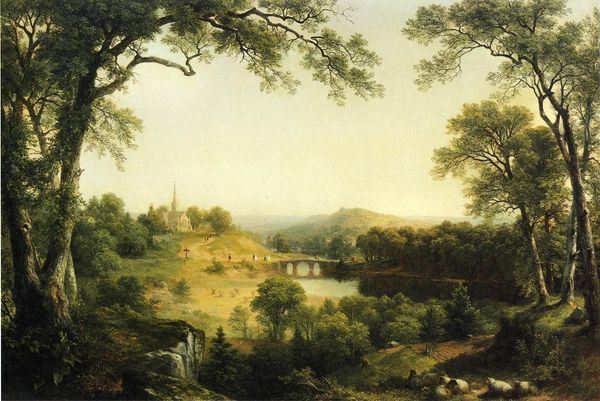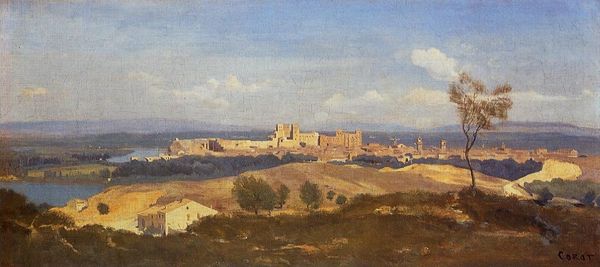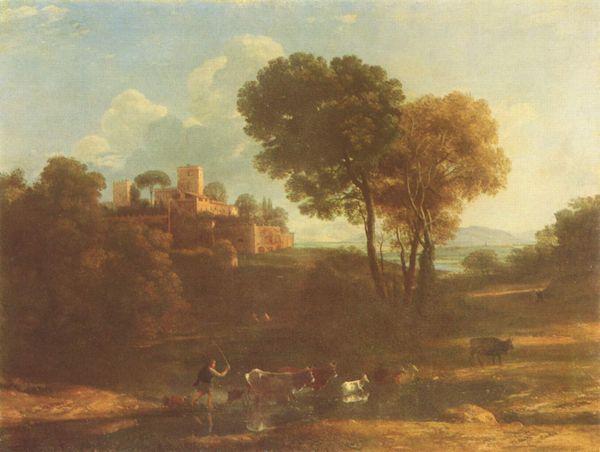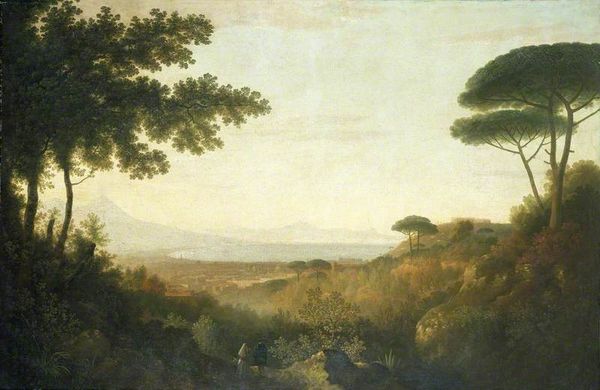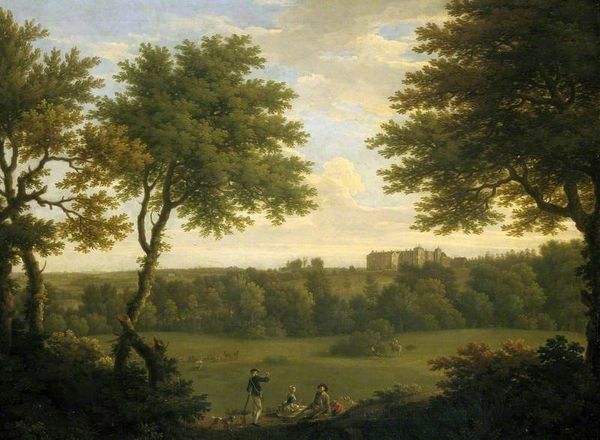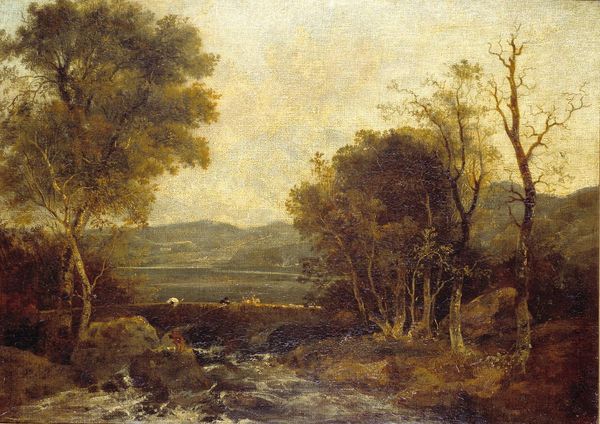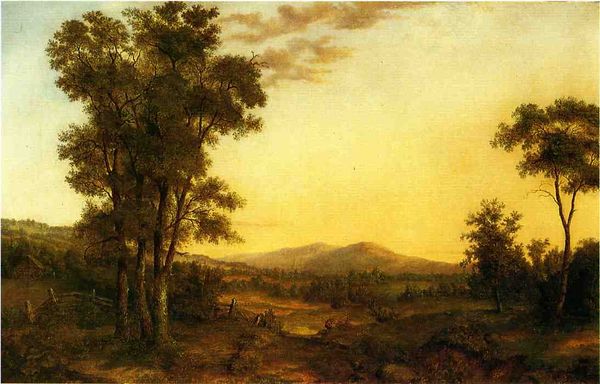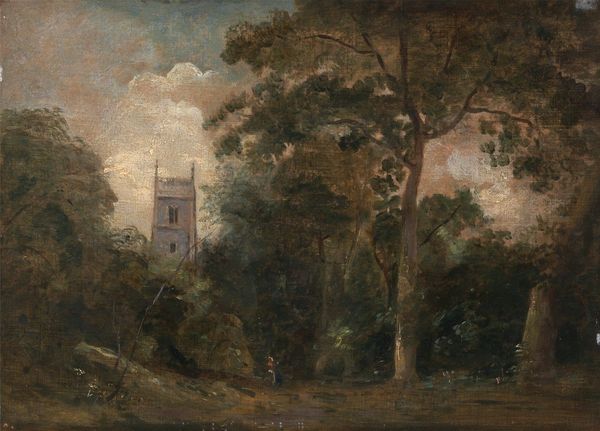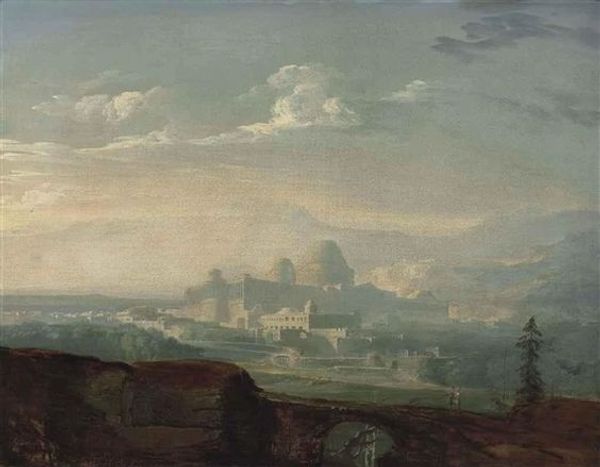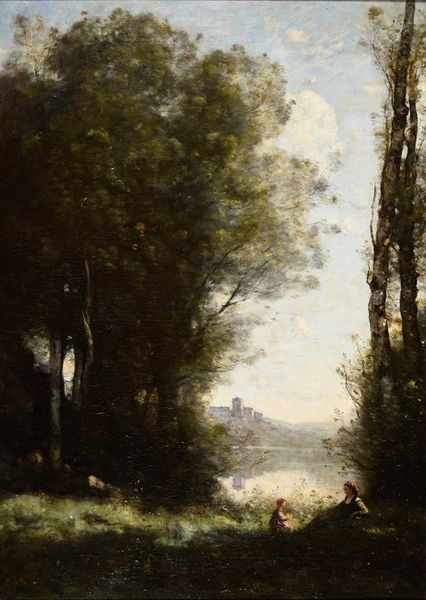
Copyright: Public domain
Editor: Pierre-Henri de Valenciennes’ "View of the Palace of Nemi," painted around 1780. It's so dreamy, almost like a memory. The colours are muted and soft, making it feel like you're looking into the past. What do you make of the overall composition? Curator: This dreaminess you perceive aligns perfectly with its cultural moment, straddling the Enlightenment’s end and Romanticism’s rise. Landscape, as a genre, began to mirror not just the external world, but the inner states of the viewer. Do you notice how the placement of the palace, almost hidden, invites the eye – and perhaps the soul – on a journey of discovery? Editor: I do. It feels almost intentionally obscured, making you work to see it. Why depict it this way? Curator: Think of ruins in Romantic painting as symbols of time’s passage, and the ephemeral nature of human achievement. The palace isn’t just a structure; it's an emblem. A suggestion of human grandeur fading back into nature, reminding us of mortality. Does the enveloping foliage whisper anything to you? Editor: Maybe that nature is eternal, while empires and palaces are not? And the softness… Is it a way of romanticizing the past, making it seem more appealing than it really was? Curator: Precisely. It taps into a longing for a simpler, perhaps idealized, past. The hazy atmosphere almost invites us to project our own longings and meanings onto the scene. It’s not just a view; it's a stage for our own emotional reflections. Editor: I never thought about it that way, but now it's all I can see! Thanks, I've learned a lot. Curator: My pleasure. It's rewarding to explore how seemingly straightforward landscape paintings can be rich repositories of cultural memory.
Comments
No comments
Be the first to comment and join the conversation on the ultimate creative platform.
